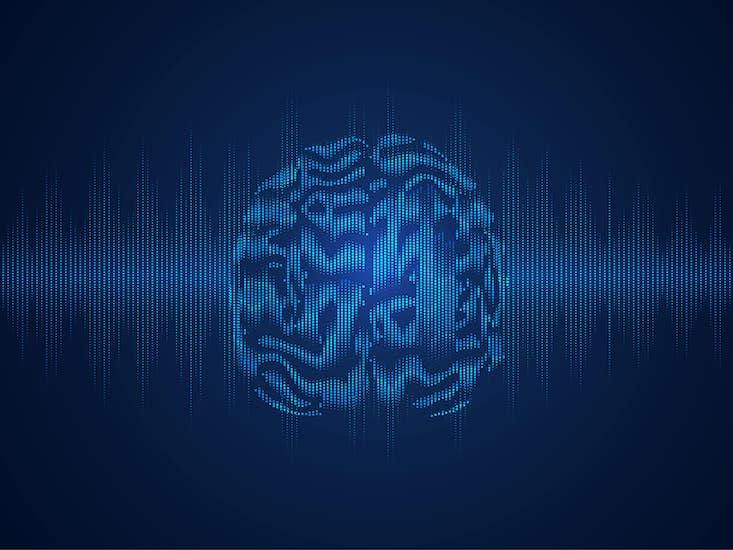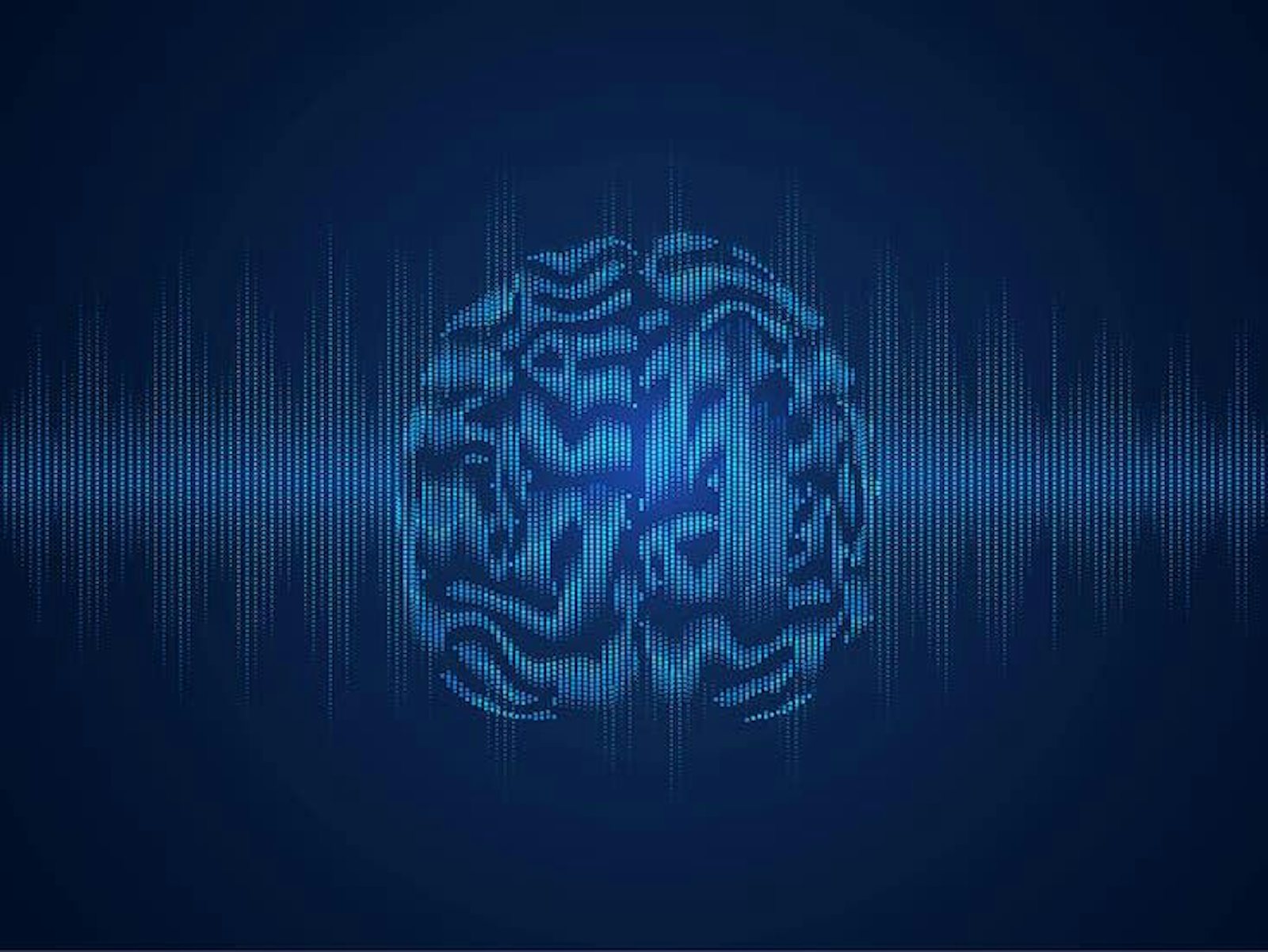
A few years ago, at Ronald Reagan UCLA Medical Center, I escaped the noisy midday hustle and bustle, ducking into a room in the Intensive Care Unit. It was completely quiet, save the subtle hum of equipment. A patient, who I will call Christopher, was lying on a bed in the room. He had not shown behavioral signs of consciousness since he experienced a severe brain injury in a car accident two weeks prior. He was believed to be comatose, and thus fully unconscious. But that was left to me to determine through behavioral assessment.
Still a graduate student, I had begun co-conducting the first clinical trial using ultrasound to treat severe brain damage in patients with a “disorder of consciousness,” like coma or the vegetative state. People who are in a coma or vegetative state are thought to have no internal experience, like seeing or hearing. On the other hand, people who are in a minimally conscious state have some internal experience, but it may be faint or altered—perhaps fading in and out. (Consciousness is a term that captures a host of phenomena, but here, I’m using it to refer to the presence of any form of internal experience.)
Thalamic LIFUP may one day be an effective treatment for disorders of consciousness.
The high-frequency sound waves of ultrasound have been used since the 1950s in medical imaging. In this case, the ultrasound is focused, through the skull, on a highly local brain region as a form of “neuromodulation.” It’s probably fair to say that most people aren’t aware that ultrasound can be a neuromodulator—that it can increase or decrease the likelihood that neurons will fire—but we have known that ultrasound can do this for decades. Exactly how this works remains unclear, but it likely results from the physical “shaking” of neurons by ultrasonic sound waves. This shaking may physically pull open ion channels or create microscopic bubbles (known as cavitation) which can alter the electrical properties of neuronal membranes and generate neural firing or “action potentials.”
You may have heard of more established neuromodulating technologies, such as transcranial magnetic stimulation and transcranial electrical stimulation. These have, at best, a precision of several centimeters, and they can’t directly target very deep brain structures. Unlike these techniques, focused ultrasound can induce neuromodulation in highly localized regions of the deep brain (just several millimeters to just over a centimeter in size) without significantly affecting nearby tissue, in some cases just millimeters away. The precision and deep-targeting ability of focused ultrasound neuromodulation allows it to manipulate the small deep-brain nuclei associated with disorders of consciousness.
For instance, focused ultrasound allows us to target the thalamus, which has long been associated with disorders of consciousness. The technique, Thalamic LIFUP (Low Intensity Focused Ultrasound Pulsation), is the brainchild of UCLA coma-science duo Martin Monti, who leads the Monti Lab (of which I am a member), and Caroline Schnakers. The thalamus is about the size and shape of your two thumbs placed next to each other, and it lies in the center of your skull. It receives massive inputs from the arousal-regulating structures of the brainstem, midbrain, and basal forebrain, and appears to play a role in filtering those signals in response to changing cognitive needs.
Damage to this vital structure may result in symptoms (low arousal, cognitive problems) common in disorders of consciousness. MRI analysis of patients with these disorders show that thalamic damage is greater in less-responsive patients as well as those that recover more slowly (or not at all). The emerging technology of LIFUP allows us to stimulate the central thalamus, a region whose stimulation using surgically implanted electrodes has improved the condition of some patients with disorders of consciousness, without ever having to pick up a scalpel.
Like most who study disorders of consciousness, we strive to understand these conditions and aid in their treatment. This is critical because, as it stands, there are no satisfactory methods to help patients recover from disorders of consciousness. These patients likely number in the hundreds of thousands in the U.S. and may require intensive life-long care. It’s a subtle art—assessing the behavior of these patients. The degree of consciousness behind a patient’s eyes—sometimes wide open, sometimes permanently closed—may be hidden behind reduced movement, blindness, deafness, or any number of impairments. We know from fMRI studies that a consistent wiggle of a finger or blinking “yes” at the right questions may reveal an internal life inside a largely motionless body.
Even the most experienced observer might fail to detect consciousness. The rate that medical professionals misdiagnose conscious individuals as unconscious during behavioral assessment is thought to be near 40 percent. Indeed, it may be impossible to detect consciousness using behavior alone; recent advances in neuroimaging have revealed that perhaps 30 percent of patients who remain completely paralyzed months after injury, and unable to express themselves, are likely fully conscious, a condition aptly named locked-in syndrome. If we conservatively assume that 20 percent of patients in a persistent vegetative state are locked-in, that means that there are roughly 6,000 of these people in the United States at any given time, looking through one-way mirrors, unbeknownst to their caretakers. These figures should, above all, convey the ethical weight of assessing and potentially treating disorders of consciousness.
With these difficulties in mind, I began the ritual of behavioral assessment with Christopher in Ronald Reagan Hospital. I clapped abruptly, just behind his head. Eyes lightly fluttered. Another clap, another flutter. If he can hear, a verbal command may be appropriate. “Christopher,” I said, “raise your left leg!” I waited 10 seconds—nothing. “Chris, raise your left leg!” Three seconds pass and his left leg moves ever so slightly. “Higher!” The leg is still.
My confidence drops. He could have just shifted at the right time; patients can reflexively tense up to loud noise. “Again, Chris, raise your left leg!” After five long-seeming seconds, it raises slightly, then drops. “One more time, Chris, raise your left leg!” It raises slightly. “Higher!” The leg raises six inches above the hospital bed and then, apparently exhausted, drops.
I had assessed Christopher before, but I had never seen him respond to command. Responding to a command suggests that Christopher understood what was being asked of him, moving his diagnosis from “Vegetative State” to a “Minimally Conscious State.” His response was particularly important because it came a day after we had stimulated his thalamus using LIFUP.
LIFUP has been used to, among other things, elicit paw kicks in rats when aimed at the motor cortex, change the responses of macaques performing cognitive tasks when aimed at the frontal lobe, and hasten recovery from anesthesia in rats when aimed at the thalamus. In the past five years, a resurgence in LIFUP research has seen it used in humans. Korean groups have used LIFUP to elicit visual and tactile hallucinations, while a recent publication by our lab reported the first ever demonstration of an MRI response to deep-brain LIFUP.10
Perhaps half of the 25 patients we have enrolled in our study have recovered—meaning they can respond to commands more effectively than before treatment and/or demonstrated increased wakefulness—at rates we wouldn’t expect from chance alone. These findings are perhaps most compelling in our “chronic” patients, who have persisted in a state of unconsciousness for over a year and are far more unlikely to spontaneously recover in the weeks during which we closely observe them.
Thalamic LIFUP may one day be an effective treatment for disorders of consciousness. Still, many challenges separate us from this goal. It remains difficult to predict how much the skull—the shape and density of which varies between individuals—may affect the LIFUP focal point, its intensity and precise position. It is also difficult to control if LIFUP may excite or inhibit brain tissues, which may depend on neuronal subtypes within that tissue, and it remains unknown how long its effects may last (though some studies suggest up to hours).
In a recent issue of the journal Brain Stimulation, we report on the behavioral results of three chronic patients. One of the patients demonstrated for the first time, after thalamic LIFUP, the ability to communicate accurately using a yes/no system. For example, I asked: “Is your mother’s name Mary?” for which the correct answer was “yes.” While, “Is your mother’s name Bethany?” required a “no.” Indeed, he answered 6 of these yes/no questions correctly, meaning, according to clinical guidelines, he had emerged from his disorder of consciousness because he was aware enough to understand language and to respond correctly.
Unfortunately, this patient did eventually regress to the level of functioning observed before LIFUP in the following month and no longer answered questions accurately in this manner. We have observed some patients appear to recover for longer periods while others only demonstrate recovery for some time—perhaps days or weeks. It remains unclear how long any impact from LIFUP may last and much research is yet to be done. However, even this temporary emergence was precious to those who knew this patient. His wife reported that, “This was the first time in over a year that I was able to talk to my husband.”
Josh Cain is a Ph.D. candidate in the lab of Martin Monti at UCLA, studying consciousness and cognitive functioning by combining neuromodulation (with ultrasound) with neuroimaging techniques like EEG and fMRI.
References
Annen, J. et al. Diagnostic accuracy of the CRS-R index in patients with disorders of consciousness. Brain Injury 33, 1409–1412 (2019).
Bystritsky, A. & Korb, A. S. A Review of Low-Intensity Transcranial Focused Ultrasound for Clinical Applications. Current Behavioral Neuroscience Reports 2, 60–66 (2015).
Cain, J. A. et al. Real time and delayed effects of subcortical low intensity focused ultrasound. Scientific Reports 11, 6100 (2021).
Folloni, D. et al. Manipulation of subcortical and deep cortical activity in the primate brain using transcranial focused ultrasound stimulation. http://biorxiv.org/lookup/doi/10.1101/342303 (2018) doi:10.1101/342303.
Lee, W. et al. Transcranial focused ultrasound stimulation of human primary visual cortex. Scientific Reports 6, 34026 (2016).
Lee, W. et al. Image-Guided Transcranial Focused Ultrasound Stimulates Human Primary Somatosensory Cortex. Scientific Reports 5, (2015).
Lutkenhoff, E. S. et al. Thalamic atrophy in antero-medial and dorsal nuclei correlates with six-month outcome after severe brain injury. Neuroimage: Clinical 3, 396–404 (2013).
Lutkenhoff, E. S. et al. Thalamic and extrathalamic mechanisms of consciousness after severe brain injury. Annals of Neurology 78, 68–76 (2015).
Monti, M. M. et al. Willful Modulation of Brain Activity in Disorders of Consciousness. New England Journal of Medicine 362, 579–589 (2010).
Pisa, F. E., Biasutti, E., Drigo, D. & Barbone, F. The prevalence of vegetative and minimally conscious states: a systematic review and methodological appraisal. Journal of Head Trauma Rehabilitation 29, E23-30 (2014).
Schnakers, C. & Monti, M. M. Disorders of consciousness after severe brain injury: therapeutic options. Current Opinion in Neurology 30, 573–579 (2017).






























